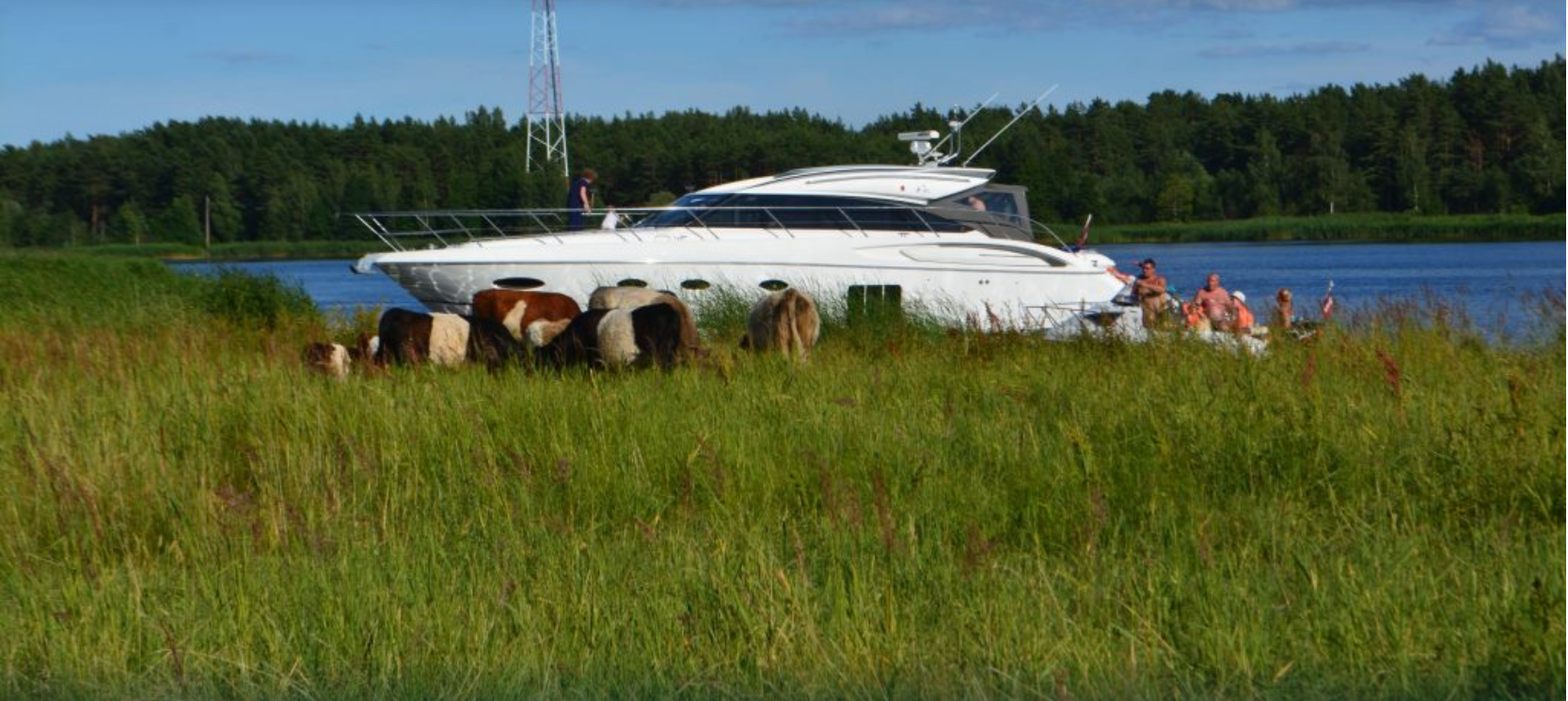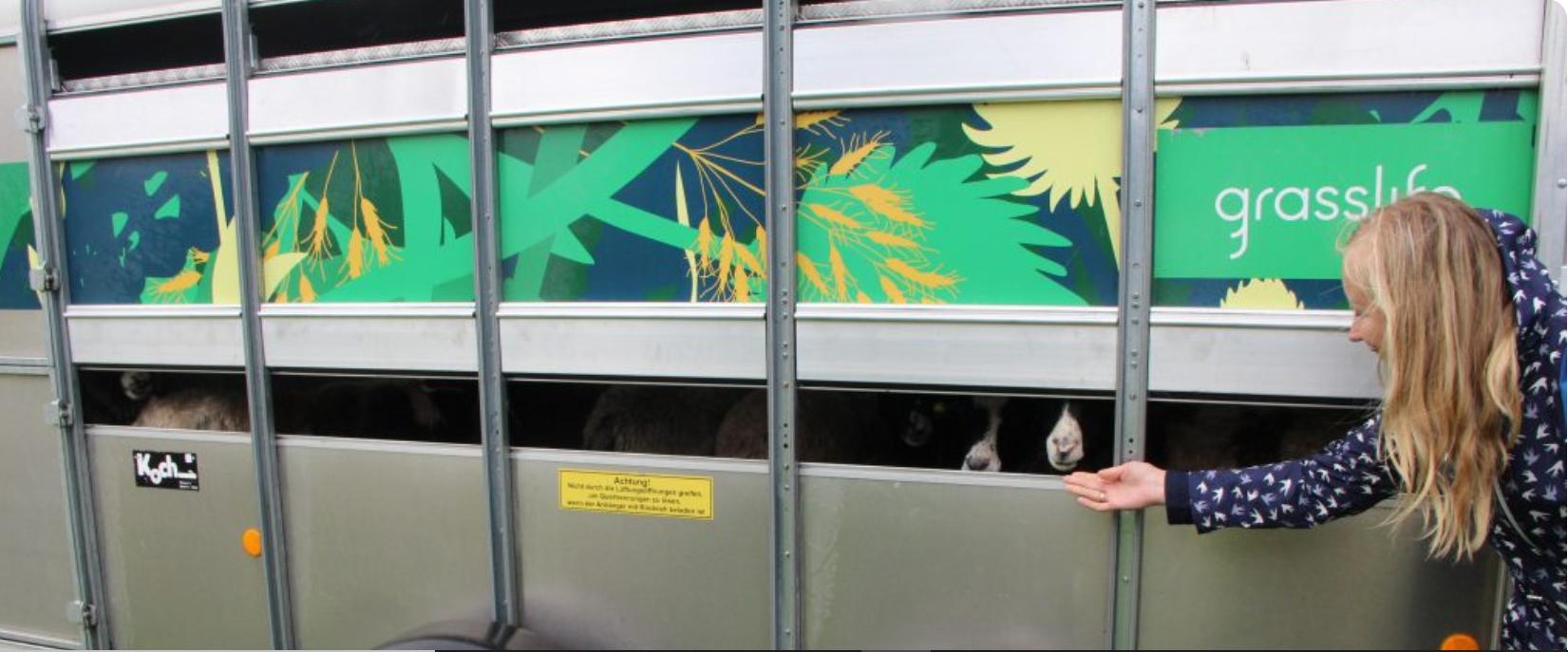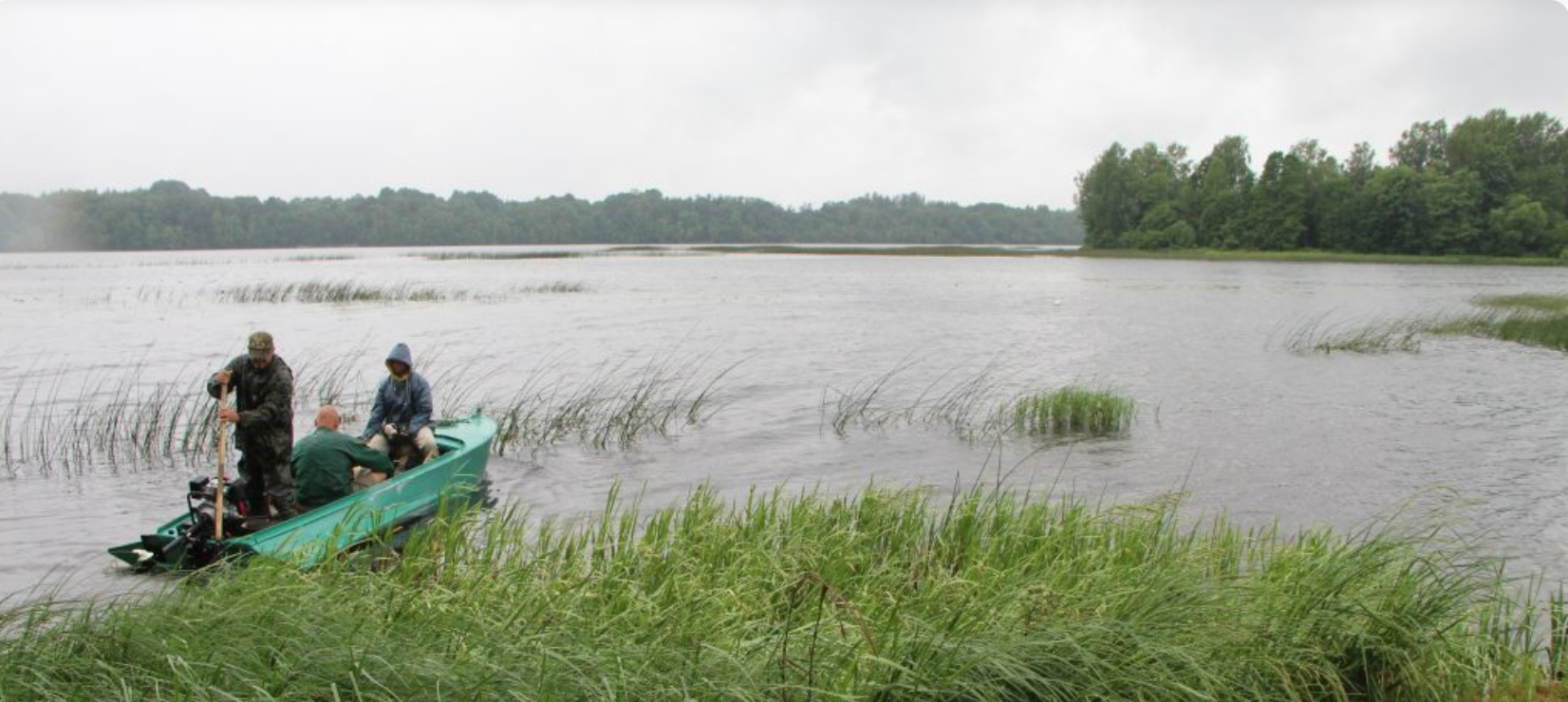GrassLIFE mobile grazing unit in 2020 - in the city meadows, on the beach, in the art park
The review of 2020 grazing season
As usual, the mobile grazing herd of GrassLIFE project spends the winter in their winter base in Ligatne. Galloway cattle have a shelter for wind, but they like to spend cold and snowy winters in the open air. Currently, there are 112 cattle in the herd, and 30 calves were born this summer. Each calve has been named after a flower in semi-natural grassland, so we have Baldriņš, Puplaksis, Madara, Dedestiņa, Gandrene, Sētložņa and many other “flower-named” calves grazing on the meadow and eating only natural meadow plants in their lifetime. The number of places where the mobile grazing unit has operated has also increased since the beginning of the project.
The mobile grazing season 2020 was opened in the meadows of Sigulda with the first grazing area on Fennoscandian wooded meadows and pastures in Klauku Bay, where the herd arrived on April 29th. Later on, the herd on Klauku Bay were complemented by other herds, grazing on different locations in Sigulda. All the pastures in Sigulda cross with footpaths, so the cattle of the mobile grazing unit got acquainted with many Sigulda residents and guests. In total, the mobile grazing units grazed on seven semi-natural grasslands of 53 hectares in the vicinity Sigulda (Gauja National park) this year. Most of the areas are state-owned (managed by Nature Protection Agency), but 17 hectares were privately owned grasslands.
Sigulda’s resident Sarma Kvasele lives in Strelnieki, located near one of the grazing areas in 2020 - Melnie krasti. She volunteered to help with monitoring of the herd and almost every day she went to visit the herd in pastures, inspect the enclosures and assess the well-being of cattle. Sarma remarks that the cattle in the mobile grazing unit are very well behaved - friendly but restrained and they got along well with the interest shown by the hikers walking by. Many of the hikers visited Melnie krasti with a particular interest to look at the herd, especially in the autumn, when there was calving season for this part of the herd. Sarma observed that for many children this was the first encounter with a cow in person. Mrs. Sarma also had her own pet in the herd - Vizbulīte - and she will be happy to welcome the herd again in the spring.

Given that the mobile grazing unit in Sigulda and elsewhere in Latvia is often located close to people and pastures cross footpaths, for many people this is a rare encounter with grazing animals. Herd managers pay particular attention to socialising animals in the mobile grazing herds, by regular visits, talking to cows, spending more time among them so that the animals are used to people, are not skittish, do not disturb people and do not get nervous in the presence of people.
In 2020, the mobile grazing unit also started their work in the meadows of the city of Riga for the first time, where, in cooperation with the Riga City Council, EU habitat Boreal Baltic Coastal meadows were managed and restored. During the summer, the mobile grazing unit grazed 18 hectares of grassland in Vakarbulli. The proximity of the beach was a great support to the herd in the hot summer, and they could often be encountered cooling off in the water, watching the passing yachts and overlooking the holidaymakers.

The most unusual grazing place this season was Kaibala Island on Daugava river, to which 13 sheep from a mobile grazing unit were assigned. To get to the island, the sheep had to go on a boat trip accompanied by herd managers. During the season, they grazed on a semi-natural meadow of about 1 hectare, home to a habitat of EU importance Semi-natural dry grasslands and scrubland facies on calcareous substrates.
Sandra Pudane from Lielvarde municipality was responsible for cooperation with the mobile grazing unit, remarks that even after one season the landscape has changed remarkably. The overgrown jungle has disappeared, the sheep have also eaten the lower part of the bushes, and thus a beautiful landscape has appeared, and the island has become transparent from one shore to the other. Sandra also admits that her responsibility for the herd has been a very unusual and enjoyable task, which is not a typical work of the municipality, and sheep grazing on the island has been an event for everyone. This experience has inspired the Lielvarde municipality to continue with the grazing management in the coming years, looking for cooperation with private sheep owners.


In total, in the 2020 season, 261 hectares were grazed in 28 pastures throughout Latvia - in Sigulda, Incukalns, Amata, Ligatne, Talsi, Kandava, Valka, Ape, Ergļi, Lielvarde, Dundaga, Madona and Salacgriva counties and in the cities of Riga, Jelgava and Sigulda. The grazing season ended on November 24th when the last cows left pasture in Zvartava. During the busiest grazing period, the mobile grazing unit was simultaneously located in 13 different places in Latvia.
To be able to graze as much valuable grassland as possible, the herd is divided into smaller units that graze in different regions of Latvia, and small herds are used for sequential grazing of grasslands in one region. This also reduces transport distances, which is more convenient for cows and more climate friendly.
Baiba Strazdina, a grassland expert and regional coordinator of the GrassLIFE project, evaluates the season. “In the areas where our cattle grazed for the second or third season, the positive impact of grazing is already evident in the vegetation and in landscape - extensive grazing allowed some of the previously suppressed meadow plants to bloom and spread seeds, and thanks to the open areas of soil created by the animals, the seeds were able to reach the soil and take root. Continuing grazing in the second half of the summer reduced the shade to young seedlings, allowing them to develop, so that this year they can bloom and, in a year, we will be able to witness a greater abundance of flowering plants.”
The mobile grazing unit is a beef cattle herd established within the framework of the GrassLIFE project implemented by the Latvian Fund for Nature. The task of the herd is to graze on areas that are difficult to manage, where it is necessary to restore the semi-natural grasslands that host habitats of EU importance. The herd mostly works on meadows that are at least 5 hectares in size, located in a Natura 2000 area and that correspond to one of the target habitats in GrassLIFE project - a grassland habitat of EU importance. The mobile grazing unit is a service that includes the transport of animals, the installation of fences, the monitoring of pastures, and depending on the specifics of the pasture area, the costs of this service are between 50-100 EUR per hectare. The project GrassLIFE is co-financed by EU LIFE Programme, Latvian Environmental Protection fund and project partners.







